That Instagram-perfect van life photo you saw at Moab? The photographer probably waited 3 hours in a line of 47 other vans.
The truth about popular van life spots is that they’re no longer enjoyable. Moab costs $40 just to park overnight. Quartzsite turns into a crowded RV city every winter. Joshua Tree books are available 6 months in advance.
These places became famous for being amazing. Now they’re amazing at being expensive and crowded. When 200+ vans show up in small desert towns, something breaks. But here’s what most van lifers don’t know: America has thousands of incredible spots that don’t show up on Instagram.
Places with better views, friendlier locals, and zero crowds. You just need to know where to look. This guide reveals 21 overrated van life destinations and gives you specific alternatives.
21 ‘Instagram-Famous’ Van Life Spots Are SCAMMING You – Discover the HIDDEN Gems Instead
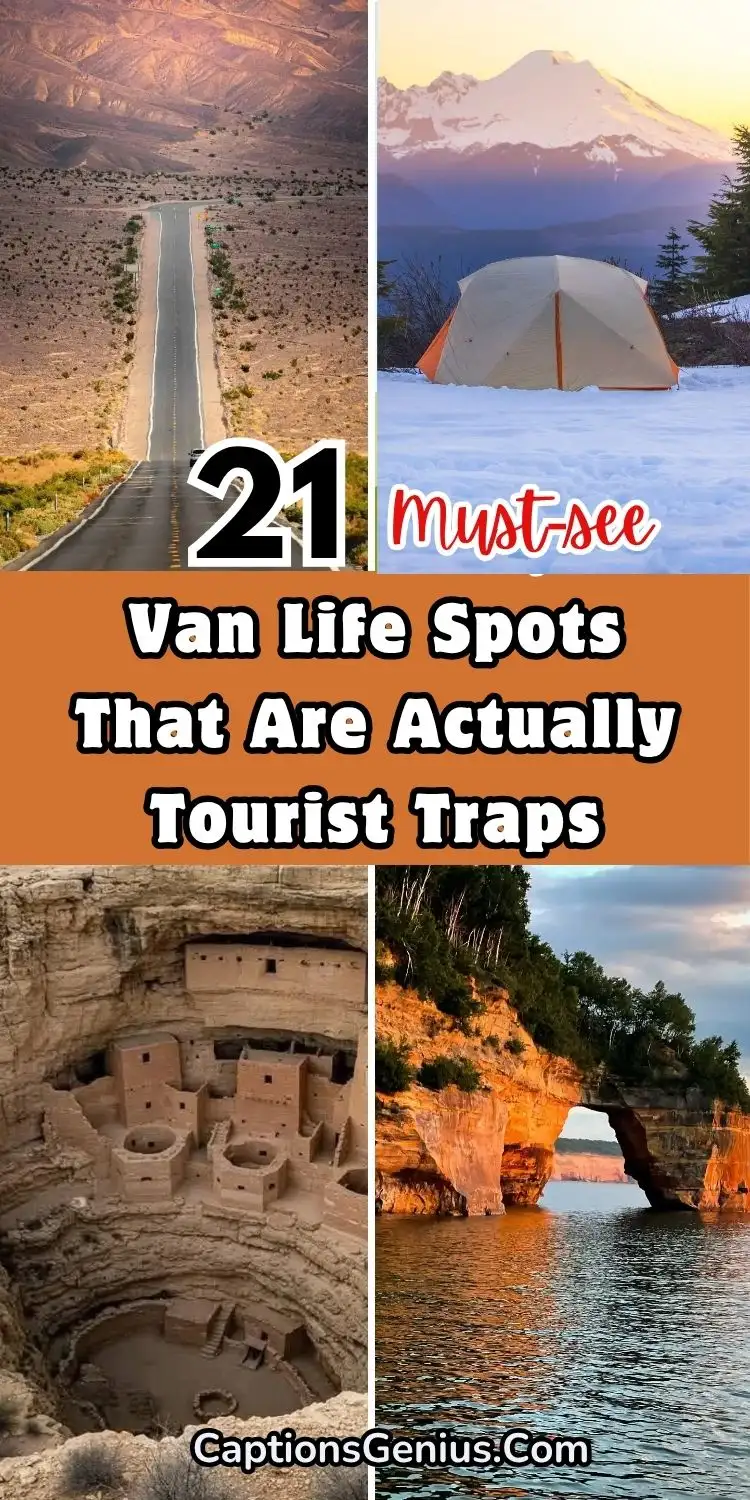
The Southwest Circus
This is the Southwest’s most overrated van life destination, where Instagram fame has turned once-peaceful desert havens into outdoor theme parks.
The Southwest has become van life’s biggest victim of its success. Moab alone sees 1.5 million visitors yearly, transforming this small Utah town into a congested mess that rivals major cities during peak season.
What most van lifers don’t realize is that some of the region’s most breathtaking alternative van life destinations sit just hours away, offering the same red rock magic without the circus atmosphere.
1. Moab’s Madness vs. Kanab’s Calm
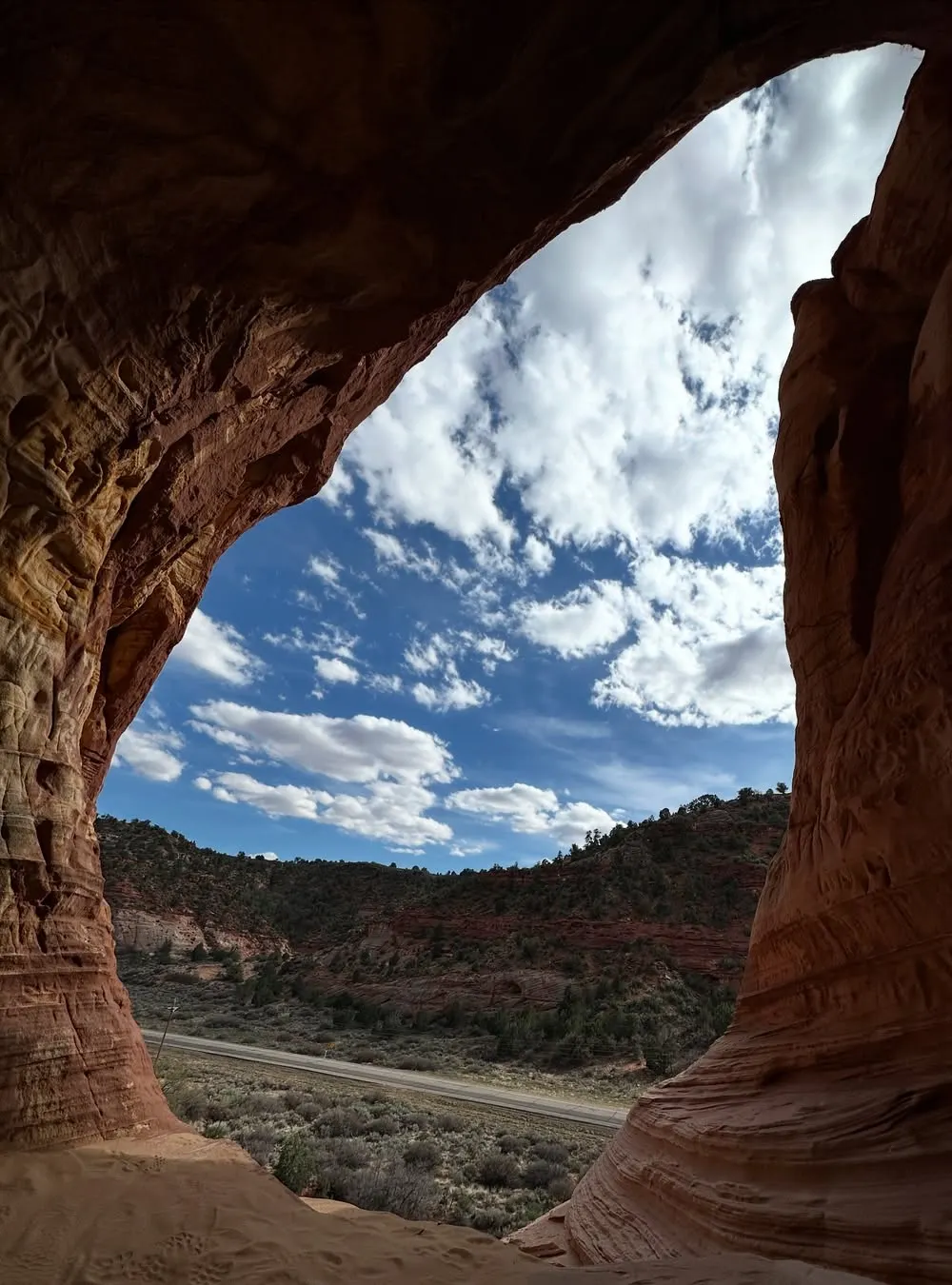
Moab has become the poster child for van life overcrowding. During peak season (March through October), finding a parking spot downtown requires the patience of a saint and the budget of a tech executive. Dispersed camping areas fill up by noon, and don’t even think about snagging a spot at the popular Sand Flats Recreation Area without arriving before dawn.
Skip the bedlam and head to Kanab, Utah. This hidden van life gem sits between Zion, Bryce Canyon, and the Grand Canyon North Rim. The BLM land surrounding Kanab offers fantastic free camping with 360-degree views of Vermillion Cliffs and zero crowds.
The town itself maintains that authentic Western charm that Moab lost years ago. It is complete with affordable local diners and helpful gear shops that cater to locals, not just tourists.
From Kanab, you can explore the Wave (with permits), hike through Buccaneer Trail’s slot canyons, or camp for free at the spectacular Coral Pink Sand Dunes. The best part of it all is that you’ll have space to breathe and enjoy the desert’s peaceful energy.
2. Quartzsite’s Winter Circus vs. Yuma’s Hidden Oasis

Every winter, Quartzsite, Arizona, transforms from a sleepy desert town of 3,600 residents into a sprawling RV metropolis of 200,000+ winter visitors. Quirky gathering of rockhounds and snowbirds has morphed into a commercialized madhouse where finding a quiet camping spot requires driving miles into the surrounding desert.
The Yuma East Wetlands Park area offers a brilliant alternative for winter desert camping. The nearby town of Yuma offers all the amenities you need, like grocery stores and excellent Mexican food.
Yuma’s location also gives you easy access to both Saguaro National Park’s less-crowded eastern section and California’s Salton Sea region, expanding your exploration options significantly.
3. Joshua Tree’s Reservation Nightmare vs. Mojave’s Freedom
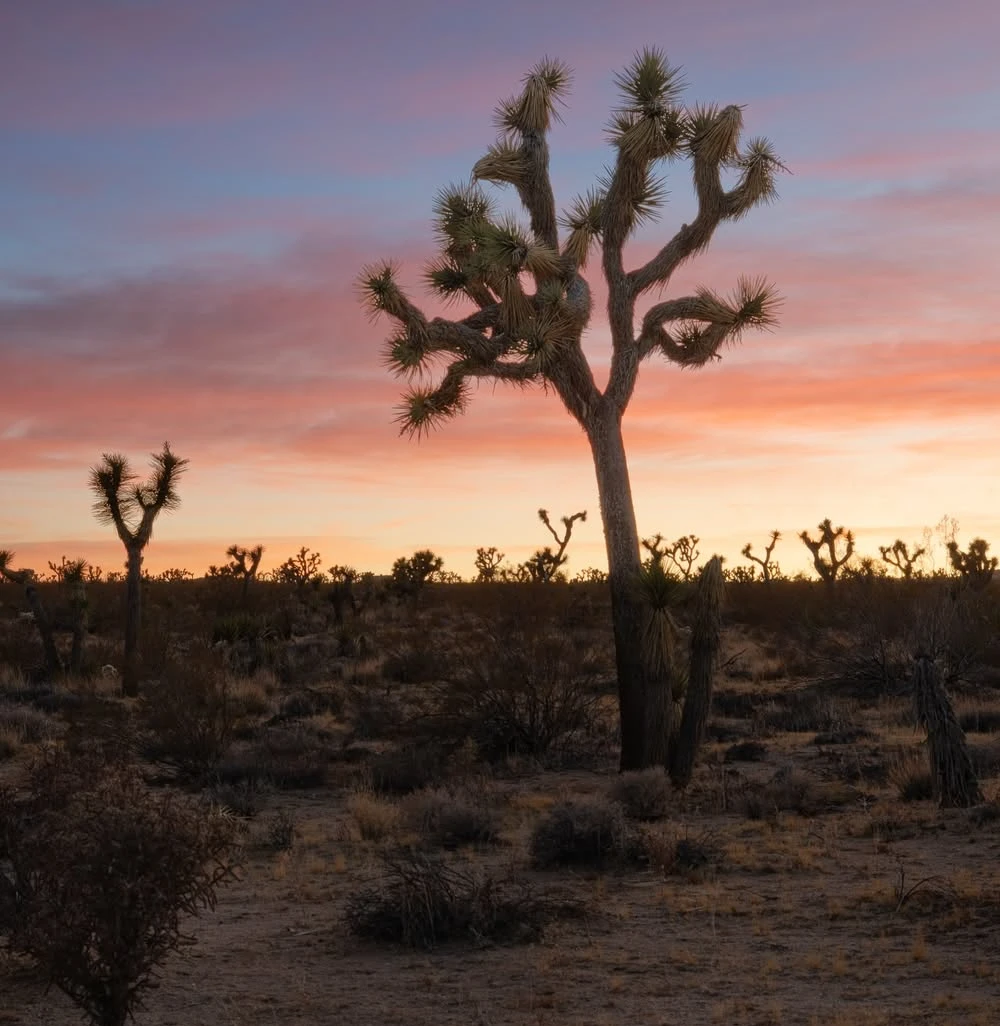
Joshua Tree National Park has become so popular that camping reservations book out six months in advance. Even if you score a spot, you’ll be packed in like sardines with RVs and tents just feet away from your van. The park’s popularity has created a permit system that feels more like winning the lottery than planning a camping trip.
Mojave National Preserve offers everything Joshua Tree promises, delivered with authentic desert solitude. Unlike its famous neighbor, Mojave National Preserve allows dispersed camping throughout most of the preserve.
The preserve’s Hole-in-the-Wall area provides excellent hiking and rock formations that rival Joshua Tree’s best features. Kelso Dunes offer singing dunes and incredible stargazing opportunities. You can also explore this desert wonderland without fighting crowds or booking months in advance.
4. Sedona’s Spiritual Traffic Jam vs. Cottonwood’s Authentic Energy
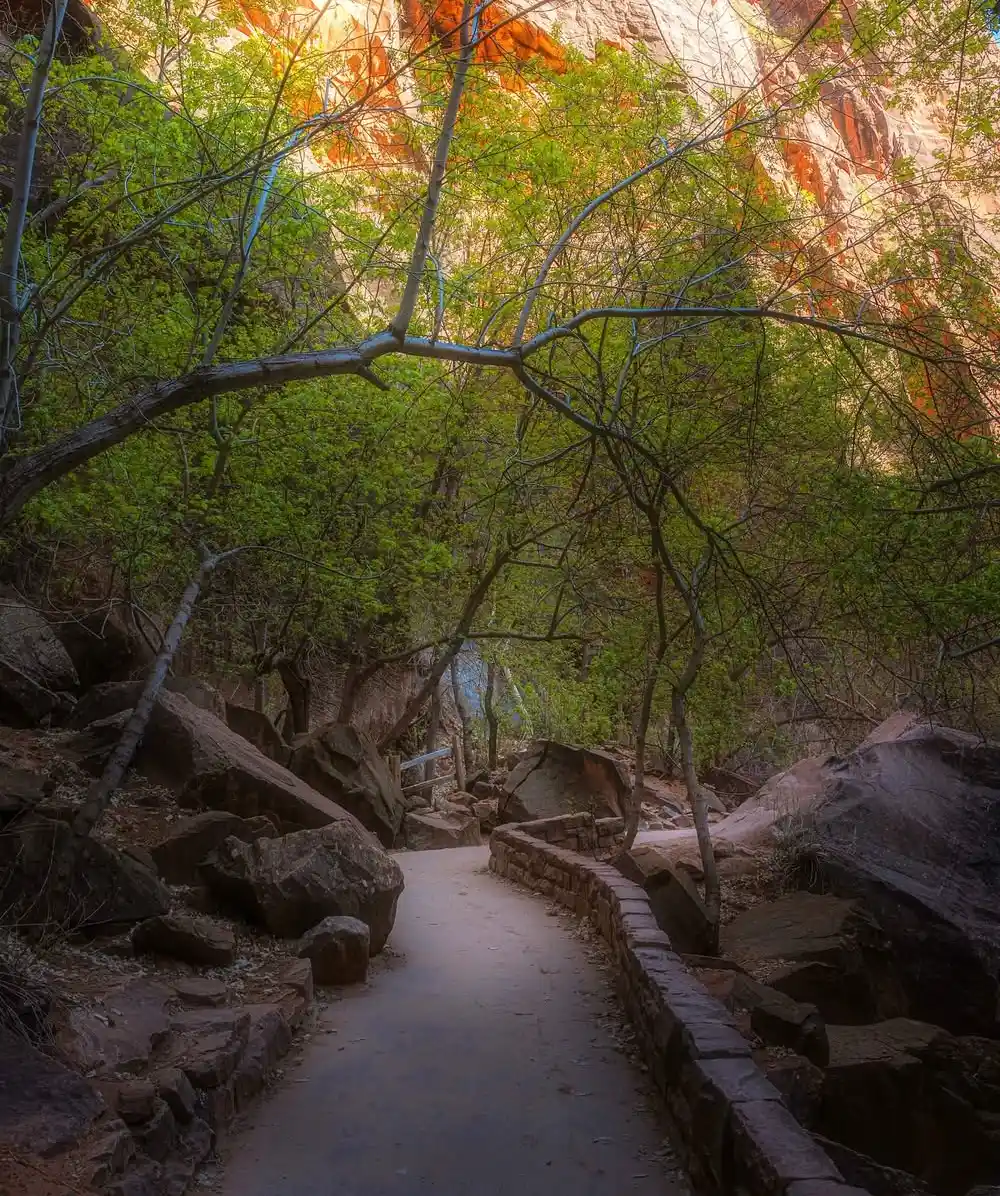
Sedona’s red rocks are undeniably captivating, but the town’s spiritual energy gets lost in traffic jams, overpriced crystal shops, and tour buses. Finding affordable overnight parking has become nearly impossible. Most van lifers are forced to drive 45 minutes to Flagstaff just to find a place to sleep.
The Cottonwood and Camp Verde area supplies the same spectacular red rock scenery with a fraction of the commercialization. Dead Horse Ranch State Park offers affordable camping ($35/night) with river access and hiking trails that exhibit the Verde Valley’s diverse landscapes.
The town of Cottonwood maintains an authentic Arizona feel, complete with local wineries and historic districts.
In Cottonwood, you can explore Sycamore Canyon Wilderness, discover ancient Sinagua ruins at Montezuma Castle, or soak in natural hot springs without steering through Sedona’s spiritual traffic jams.
5. Zion’s Overflow Crisis vs. Snow Canyon’s Serenity
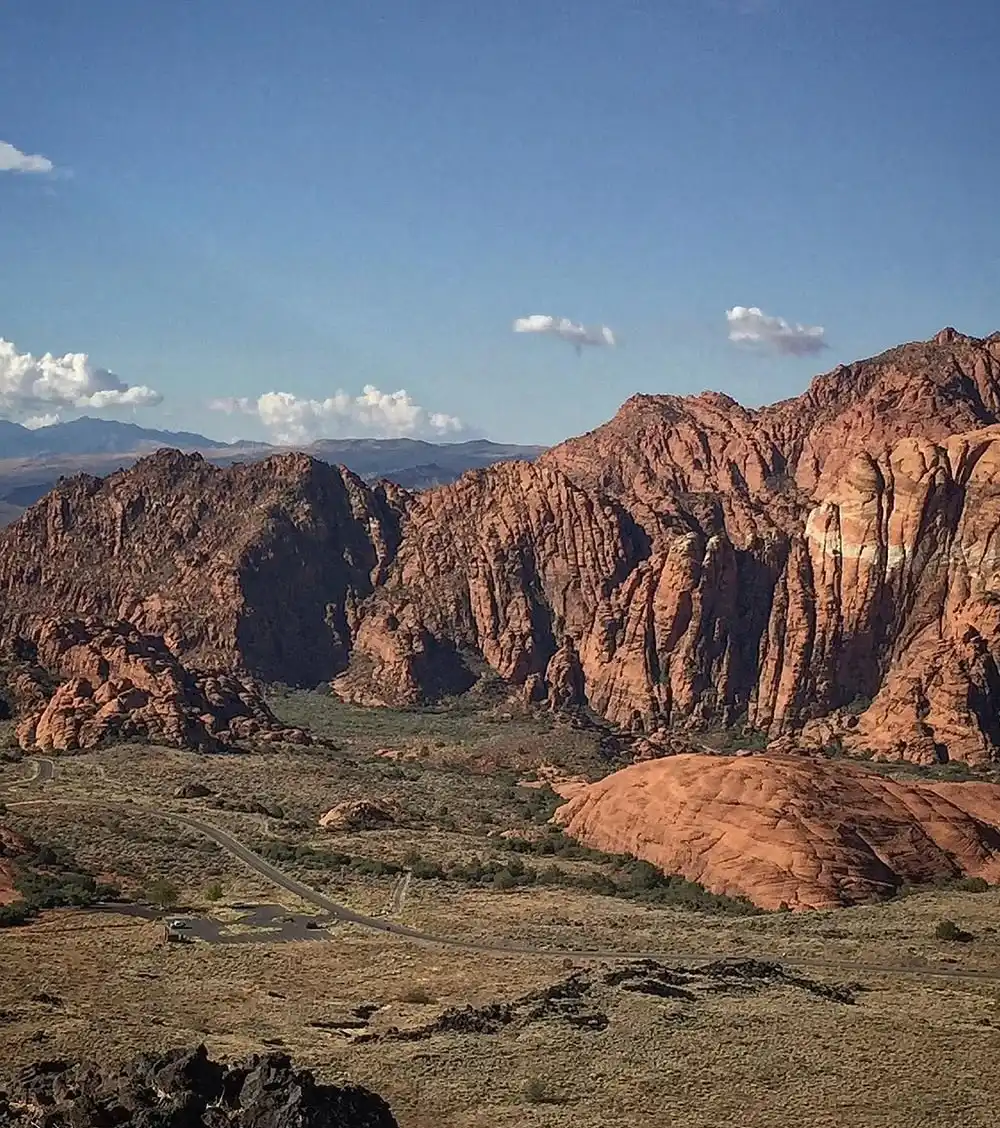
Zion National Park’s shuttle system was supposed to solve overcrowding problems, but has instead created new ones. The overflow parking fills up before sunrise during prime season, turning a peaceful nature experience into a logistical nightmare.
Snow Canyon State Park in Utah offers Zion’s dramatic scenery scaled down to human proportions. This state park displays slot canyons, red rock formations, and hiking trails that show southern Utah’s geological wonders without the crowds.
The park’s camping loops accommodate vans, and the nearby town of St. George provides excellent resupply opportunities. Snow Canyon’s hiking trails wind through petrified dunes, ancient lava tubes, and hidden arches that feel like private discoveries rather than photo opportunities shared with hundreds of other visitors.
Pacific Coast Popularity Problems
Planning the perfect Pacific Coast van trip comes with a big reality hit. Big Sur camping costs $75 a night if you can even get a spot. Highway 1 moves at 15 mph behind tour buses. Cannon Beach parking fills up before you finish your coffee.
The Pacific Coast has become a victim of its beauty. Everyone wants that perfect ocean sunset shot. But most people end up stressed, broke, and fighting crowds instead of relaxing by the waves.
1. Big Sur’s $75 Campgrounds vs. Lost Coast’s Free Beaches
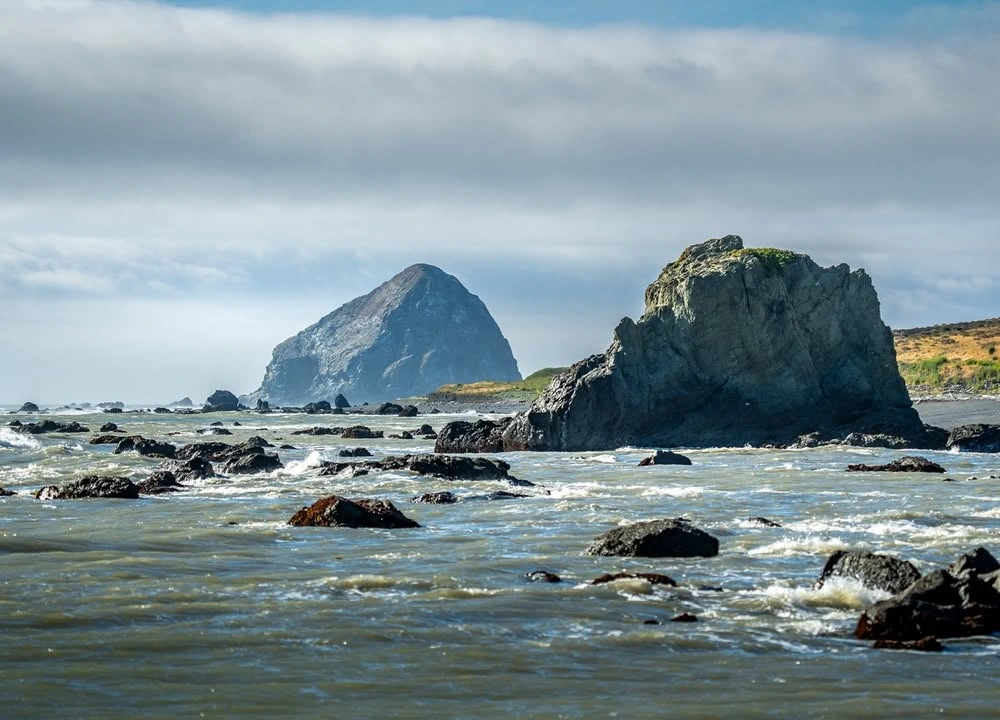
Big Sur looks amazing on Instagram. Living there in a van is quite the opposite. Kirk Creek Campground charges $75 per night for a cramped spot with no hookups. McWay Falls requires a 2-hour wait just to take a photo. The narrow roads make driving stressful, especially in anything bigger than a Honda Civic.
The Lost Coast in Northern California gives you everything Big Sur guarantees, without the price tag and crowds. This 80-mile stretch of rugged coastline sits between Eureka and Fort Bragg. Most tourists skip it because the roads look scary on maps.
You can camp for free on BLM land at Mattole Beach (GPS: 40.2433, -124.3633). Wake up to empty black sand beaches, sea stacks, and tide pools with zero neighbors. The ocean here is wild and untamed. There are no tour buses or overpriced gift shops.
Shelter Cove offers another excellent base camp with a small store and fuel. From here, you can hike the Lost Coast Trail or explore the King Range National Conservation Area. The weather stays cooler than in Big Sur, making summer camping more comfortable.
Important note: Check road conditions before heading out. Some Lost Coast access roads close during winter storms. Spring through fall offers the best conditions.
2. Cannon Beach’s Parking Nightmare vs. Bandon’s Open Shores
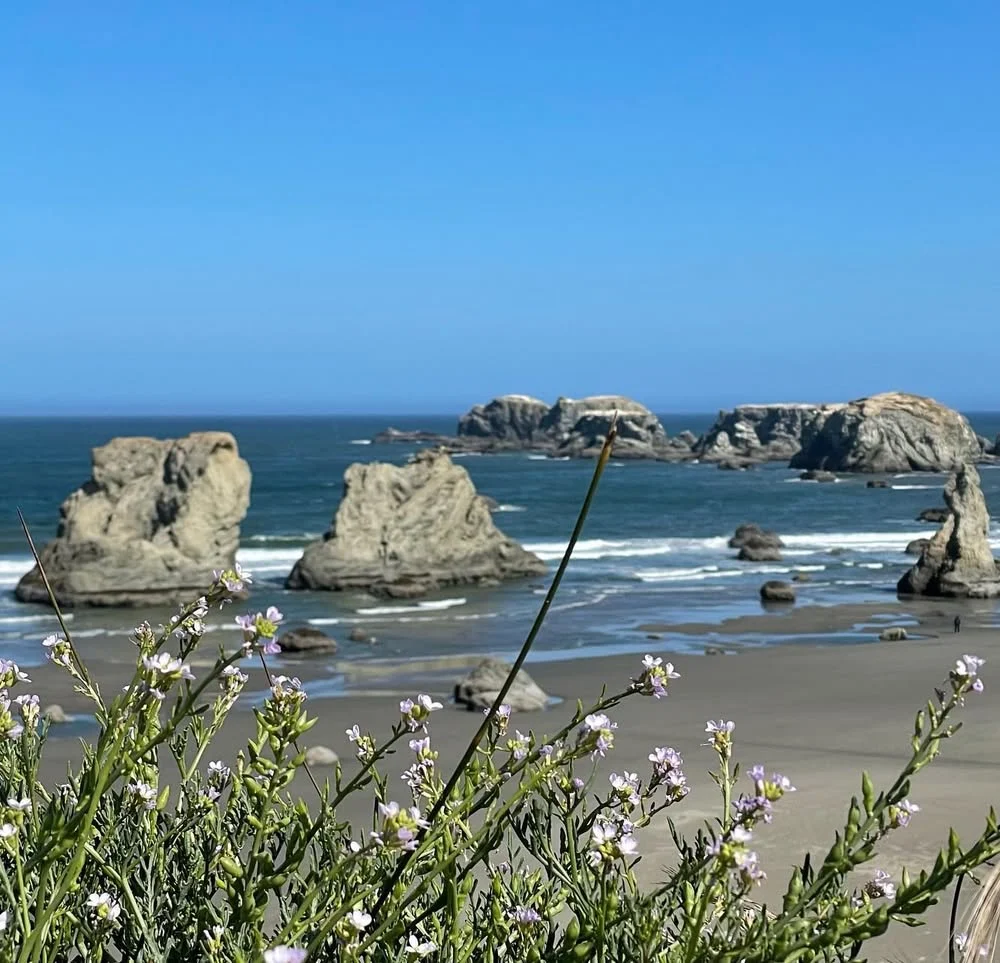
Cannon Beach’s Haystack Rock is famous for good reason. It’s beautiful. But getting there has become a misery. The main parking lot fills up by 9 AM during summer. Street parking costs $2 per hour with a 4-hour limit. Try staying longer and you’ll get a $50 ticket.
Bandon Beach on Oregon’s southern coast offers equally dazzling rock formations without the parking hassles. The beach stretches for miles with dozens of sea stacks and natural arches. Face Rock and the surrounding formations rival Haystack Rock for photo opportunities.
You can camp at Bullards Beach State Park ($31/night) or find free dispersed camping on BLM land near Langlois (GPS: 42.9167, -124.4500). The nearby town of Bandon has everything you need: grocery stores, restaurants, and friendly locals who want tourists around.
Bandon’s beaches stay less crowded even during peak summer months. The southern Oregon coast gets more sunshine than the northern areas, making it perfect for beach camping.
3. Olympic’s Permit Wars vs. Mount Baker’s Easy Access
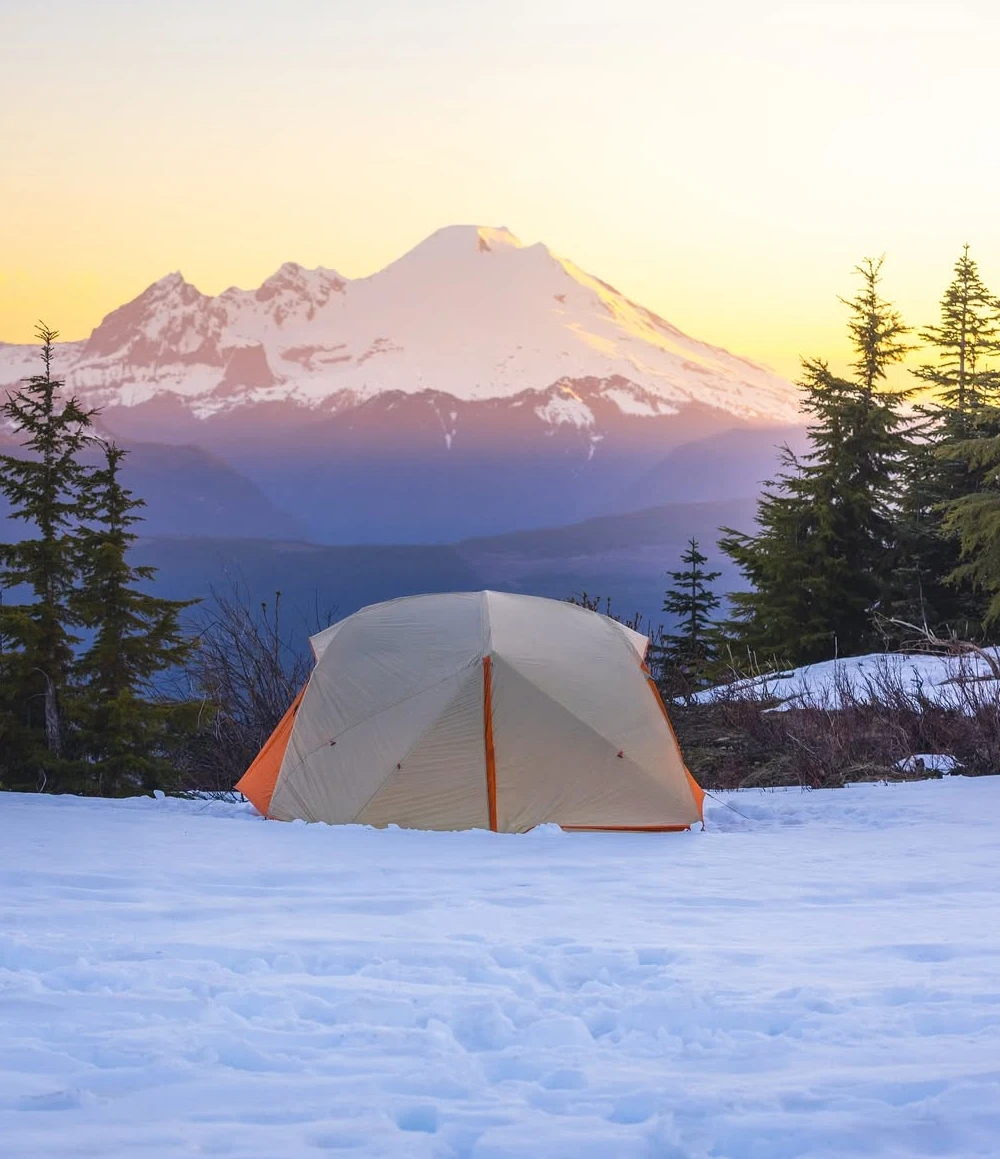
Olympic National Park requires reservations for everything. If you want to camp, book 5 months ahead. If you are planning a backpacking trip, enter the permit lottery and pray. The park’s popularity has made spontaneous visits nearly impossible.
Mount Baker-Snoqualmie National Forest offers the same misty old-growth forests and alpine meadows without the permit headaches. This massive forest covers over 2 million acres of Washington wilderness. Most of it allows scattered camping with no reservations needed.
Try camping near Heather Meadows (GPS: 48.8567, -121.6833) for incredible mountain views and wildflower displays. The area offers dozens of hiking trails through ancient forests and alpine lakes. Road access stays open May through October, depending on snow conditions.
For coastal forest experiences, head to the Quinault area on the forest’s western edge. You’ll find the same massive old-growth trees that make the Olympics famous, but with easier access and free camping options.
Winter considerations: Many forest roads close during the snow season (November through April). Check with ranger stations for current conditions.
4. Highway 1’s Traffic Jams vs. Highway 101’s Hidden Routes
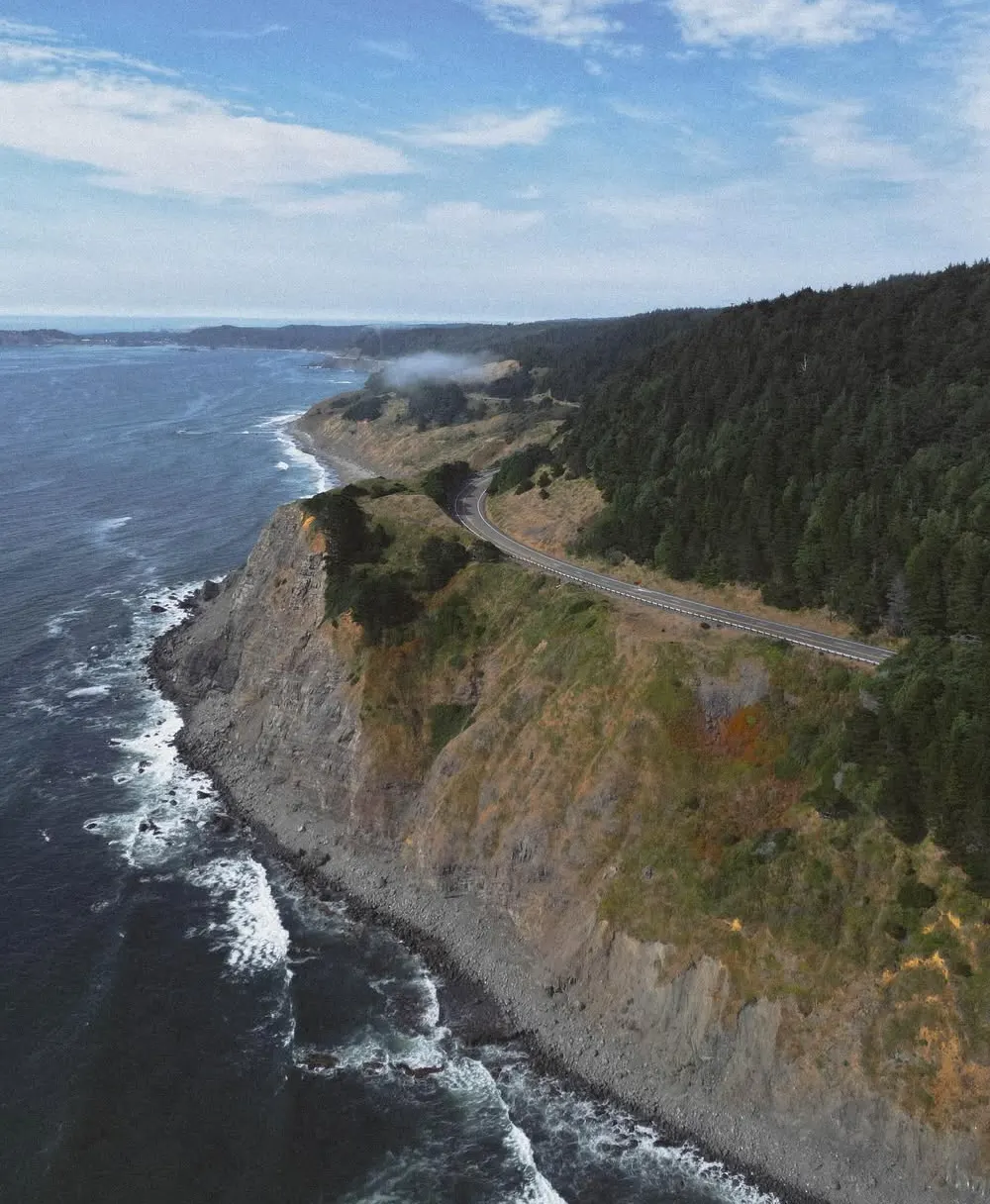
Highway 1 looks magical in photos. In reality, it’s often a slow-moving parking lot of RVs and rental cars. Summer traffic can add 3-4 hours to what should be a 6-hour drive from San Francisco to Los Angeles.
Highway 101’s inland routes offer stunning scenery with much less traffic. These Pacific coast alternatives take you through California’s wine country, redwood forests, and charming small towns that cater to locals.
The stretch from Eureka to San Francisco via 101 passes through massive redwood groves in Humboldt Redwoods State Park. You can camp among 1,000-year-old trees for $35/night at Burlington Campground. The roads are wider and easier to drive than Highway 1’s cliff-hugging curves.
You’ll discover the best van life spots like Pinnacles National Park and Paso Robles wine country that most coastal tourists completely miss.
Pro tip: Use Highway 101 for covering distance, then take short side trips to coastal areas during off-peak hours (early morning or late afternoon).
Rocky Mountain Madness
The Rocky Mountains should be about peace and solitude. Rather, they’ve become outdoor amusement parks where you need reservations, permits, and deep pockets just to see a sunset.
Glacier National Park’s Going-to-the-Sun Road turns into a parking lot every summer. Grand Teton’s Jenny Lake fills up before breakfast. Aspen charges $200 a night for basic camping. Rocky Mountain National Park requires timed entry passes like you’re visiting Disneyland.
The Rockies stretch across 3,000 miles and 8 states. The famous parks represent maybe 5% of the available mountain wilderness. The other 95% offers the same incredible peaks, alpine lakes, and wildlife without the chaos.
1. Glacier’s Traffic Jams vs. Cabinet Mountains’ Solitude
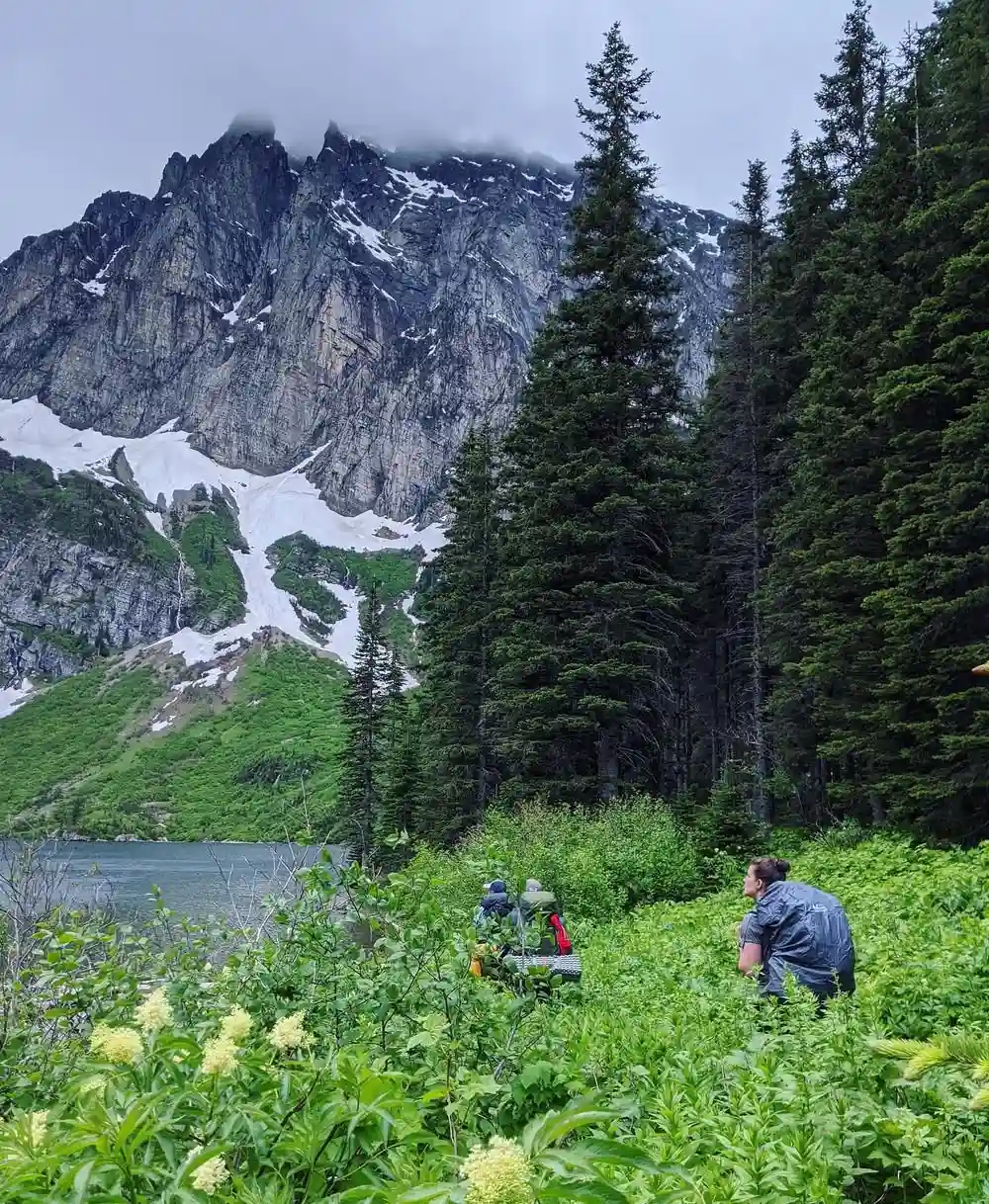
Glacier National Park sees over 3 million visitors annually, crammed into just 3 months of good weather. The Going-to-the-Sun Road becomes a slow-moving parade of RVs and tour buses. Camping reservations sell out in minutes when they open 5 months ahead. Even if you score a spot, expect to pay $35-45 per night for a cramped site with zero privacy.
The Cabinet Mountains Wilderness in northwest Montana offers everything Glacier promises, without the crowds and fees. This 94,000-acre wilderness sits just 60 miles south of Glacier but stays mysteriously ignored by most tourists.
You can camp for free on Forest Service land around Libby and Troy (GPS: 48.3869, -115.5556). The Yaak River area provides excellent dispersed camping with mountain views and fishing opportunities. From here, you can hike into the Cabinet Mountains to see pristine alpine lakes like Wanless Lake and Blue Lake.
The area offers the same grizzly bear habitat and mountain goat populations as Glacier, but with trail encounters measured in hours, not minutes, between other hikers.
Winter access: Most high-elevation areas close from November through May due to snow. Lower elevation camping around Libby stays accessible year-round.
2. Grand Teton’s Permit Lottery vs. Wind River’s Open Access
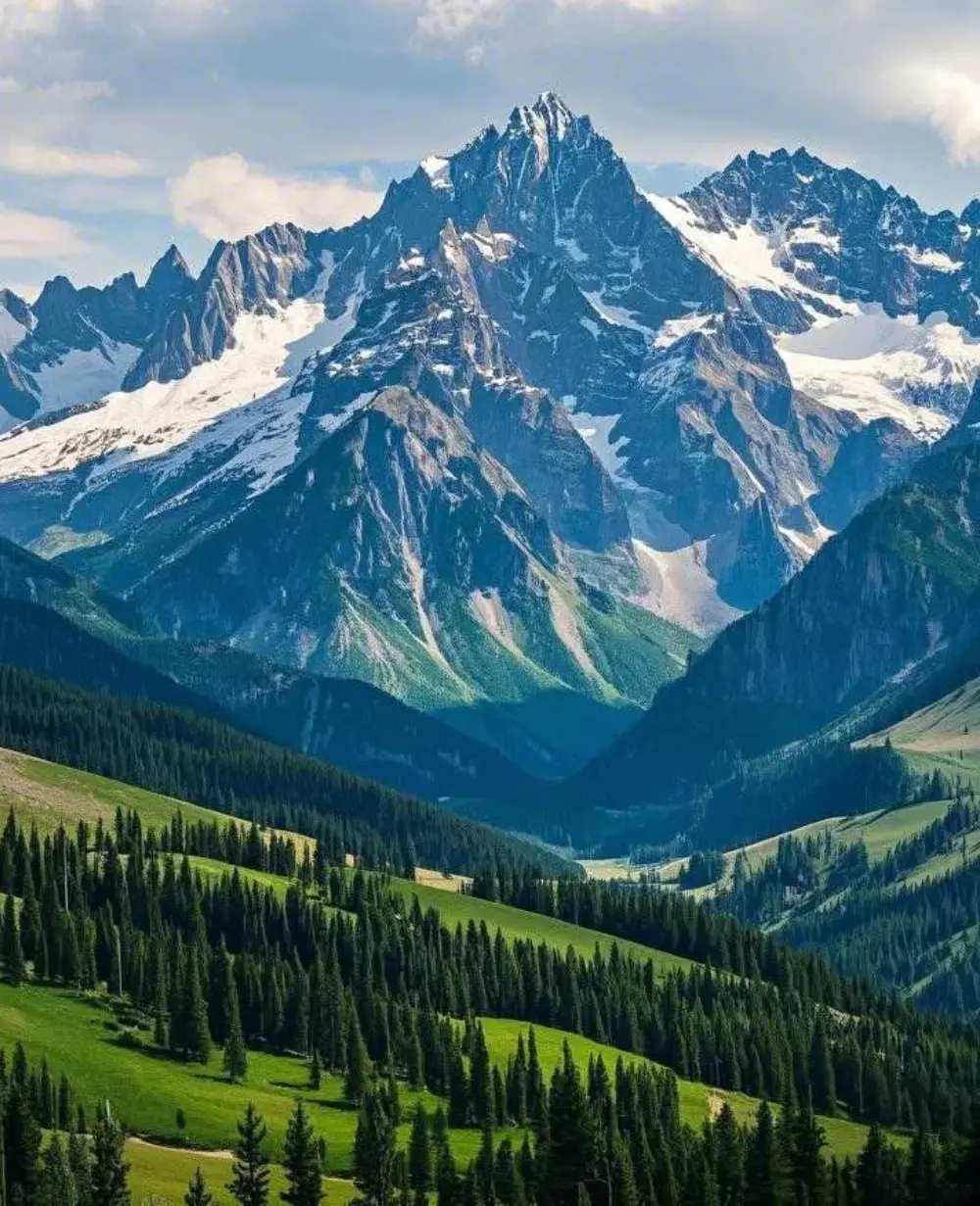
Grand Teton National Park has become so popular that even day hikes require permits during peak season. Jenny Lake boat shuttles book out weeks ahead at $20 per person. Camping costs $40-65 per night. Finding an available spot without booking 5 months early is based on luck.
The Wind River Range offers 40+ peaks over 13,000 feet with no permits required for day hiking. This massive wilderness area spans over 2 million acres of pristine Wyoming backcountry.
Base camp at Green River Lakes (GPS: 43.2281, -109.8147) for incredible access to Squaretop Mountain and the Continental Divide. The Forest Service campground costs just $15 per night, and dispersed camping is free throughout the area.
Big Sandy Lake offers another excellent entry point with free dispersed camping along the access road. From here, you can day-hike to Cirque of the Towers, one of America’s most spectacular alpine amphitheaters. The granite spires and crystal-clear lakes create photo opportunities that make the Grand Teton look ordinary.
3. Aspen’s $200 Nights vs. Glenwood Springs’ Real Value
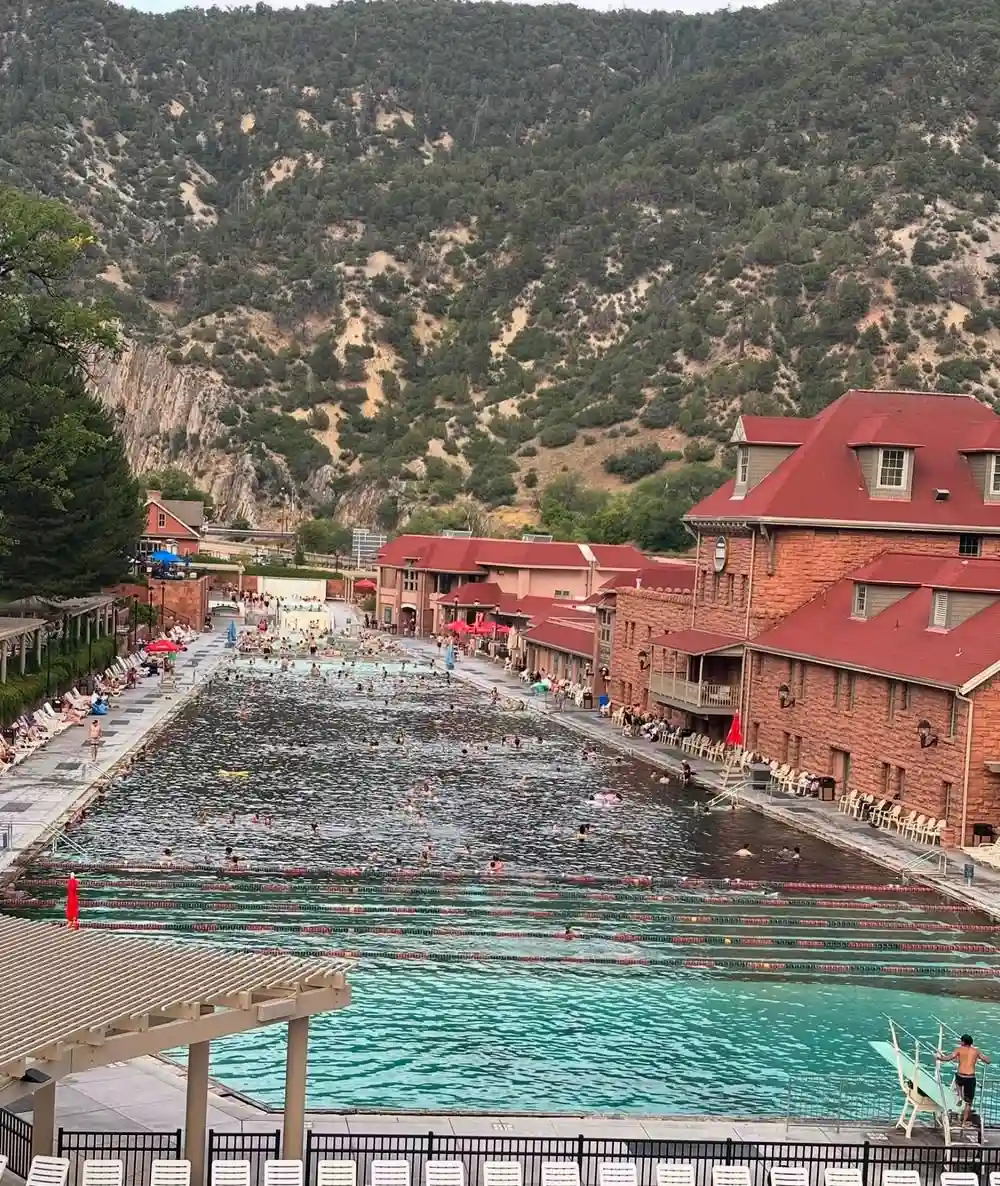
Aspen represents everything wrong with mountain tourism. Camping at Maroon Bells costs $200+ per night if you can even get a reservation. A basic hotel room starts at $400. Even parking downtown costs $5 per hour. The place has become a playground for billionaires, not van lifers.
Glenwood Springs and Carbondale offer the same stunning mountain scenery at prices that won’t bankrupt you. These authentic mountain towns sit in the same valley system as Aspen but maintain their small-town character and reasonable costs.
Rifle Falls State Park provides excellent van camping for $28 per night with access to limestone caves and waterfalls. The nearby BLM land around New Castle offers free camping with views of the Elk Mountains (GPS: 39.5708, -107.5375).
In this area, you can explore the same wilderness that surrounds Aspen. The Maroon Bells Wilderness extends far beyond the famous lakes, offering hundreds of hiking trails through 14,000-foot peaks and alpine meadows. Independence Pass provides the same autumn aspen colors without the tour bus crowds.
Glenwood Springs’ hot springs cost $29 for a day pass compared to Aspen’s $100+ spa treatments. The town has real grocery stores, affordable restaurants, and locals who live there year-round.
4. Rocky Mountain National Park’s Crowds vs. Indian Peaks’ Freedom
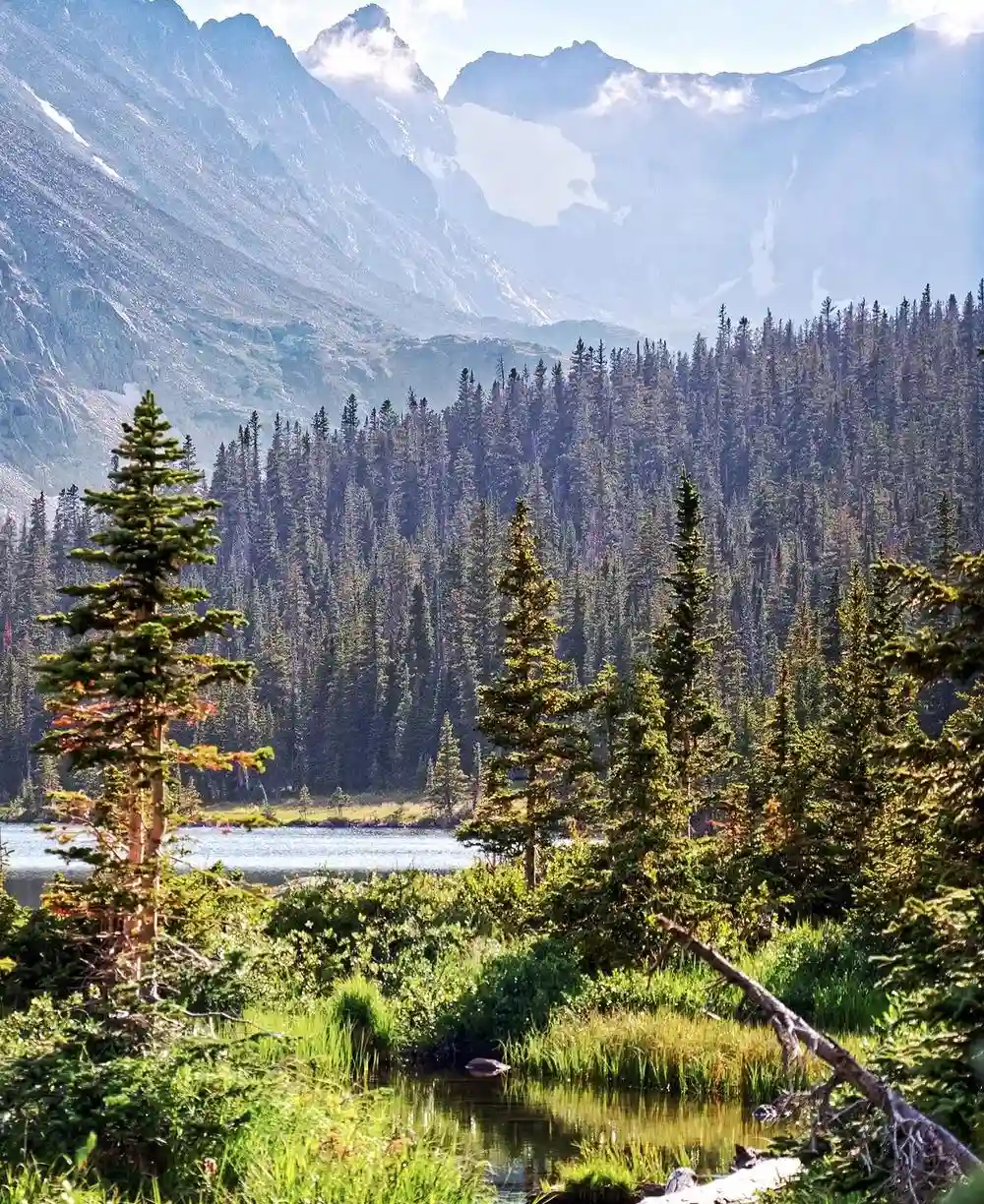
Rocky Mountain National Park requires timed entry passes, advance camping reservations, and patience for traffic jams on Trail Ridge Road. The park sees over 4.6 million visitors yearly, making solitude nearly impossible during peak season.
Indian Peaks Wilderness sits right next door but receives a fraction of the visitors. This wilderness area protects the same ecosystem and mountain ranges as the national park, but allows unlimited day hiking and free camping in many areas.
Nederland provides an excellent base camp with affordable camping at Kelly Dahl Campground ($25/night) or free dispersed sites along Nederland Reservoir Road (GPS: 39.9897, -105.5178). From here, you can hike to pristine alpine lakes like Blue Lake and Mitchell Lake without fighting crowds.
Permit note: Indian Peaks requires permits for overnight backpacking but not day hiking or car camping outside the wilderness boundary.
Desert Southwest Hidden Treasures
Most van lifers think the desert southwest means Death Valley, the Grand Canyon, and maybe Saguaro National Park. They’re missing 90% of the best desert camping in America.
The southwest desert spans four states and millions of acres. These overlooked desert van life destinations offer everything the famous places promise: stunning sunrises, otherworldly landscapes, and star-filled skies.
1. Nevada’s Secret Valleys Beyond Death Valley
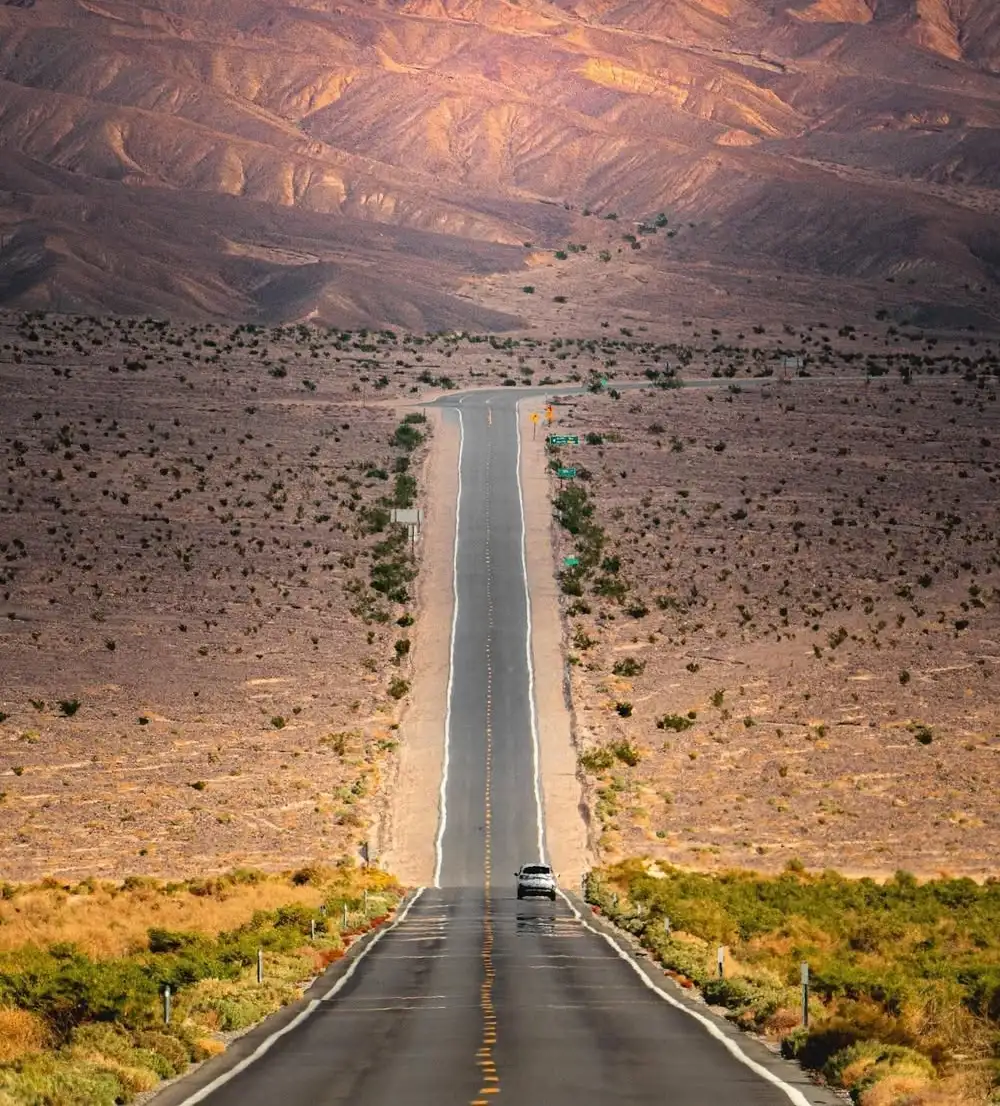
Death Valley gets all the attention, but Nevada holds dozens of similar valleys with better camping and fewer crowds. The state is 87% public land, meaning endless free camping opportunities that most people never discover.
Valley of Fire State Park offers red rock formations that rival anything in Utah’s famous parks. The camping costs just $25 per night. The park rarely fills up even during peak season.
Ancient petroglyphs cover the canyon walls, and hiking trails wind through stone arches and balanced rocks that look like alien architecture. For true solitude, head to Lunar Crater near Tonopah (GPS: 38.4167, -116.2833).
This volcanic landscape looks so much like the moon that NASA used it for Apollo training. You can camp for free on BLM land surrounding the crater and explore lava tubes and cinder cones with zero crowds.
The Hot Creek Ranch area provides natural hot springs and free camping along dirt roads south of Tonopah. The springs maintain immaculate soaking temperatures year-round, and you’ll often have them completely to yourself during weekdays.
2. Arizona’s Hidden Wonders Beyond the Grand Canyon
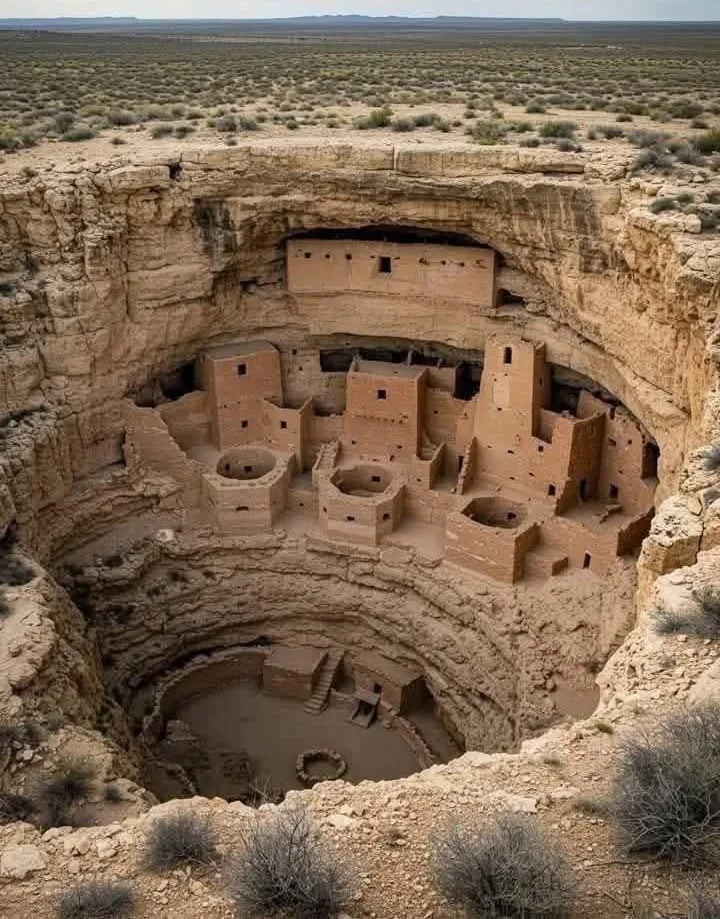
Everyone drives straight to the Grand Canyon and misses Arizona’s most spectacular desert landscapes. The state offers incredible diversity, like the painted deserts, ancient ruins, and slot canyons.
Vermilion Cliffs National Monument protects some of America’s most colorful rock formations. The Wave gets all the fame, but the monument contains hundreds of similar formations with no permits required. Buccaneer Trail offers excellent van camping and access to unnamed slot canyons and natural arches.
Chiricahua National Monument in southeast Arizona showcases massive rock pinnacles and balanced stones that create a natural sculpture garden. The campground costs $25 per night and rarely fills up. You can explore the Sky Islands ecology, where desert meets mountain forest.
Organ Pipe Cactus National Monument sits right on the Mexican border but sees fewer visitors than most city parks. The monument protects rare desert species and offers excellent stargazing away from light pollution. Dispersed camping is available on surrounding BLM land for free.
3. New Mexico’s Overlooked Desert Gems
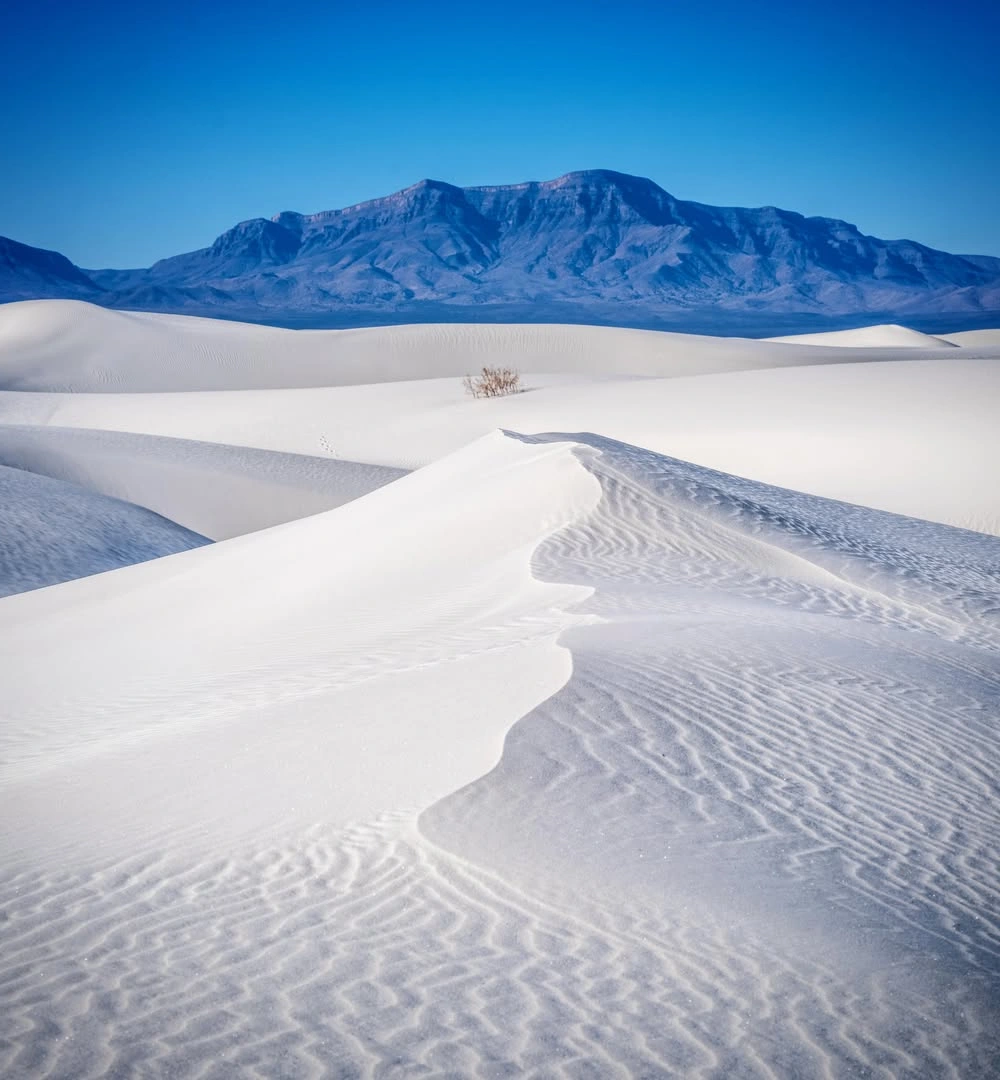
New Mexico might be the most underrated desert state for van life. Most people think of Santa Fe and Albuquerque, missing the incredible landscapes that fill the state’s less-populated regions.
White Sands National Park offers camping among pure white gypsum dunes that look like snow in the desert. The park stays surprisingly uncrowded, and watching sunrise paint the dunes pink and orange beats any Grand Canyon photo.
Bisti Badlands near Farmington features alien-looking rock formations called hoodoos. You can camp for free on surrounding BLM land and explore these mushroom-shaped stones that look like they belong on Mars.
4. Texas Big Bend Region Secrets
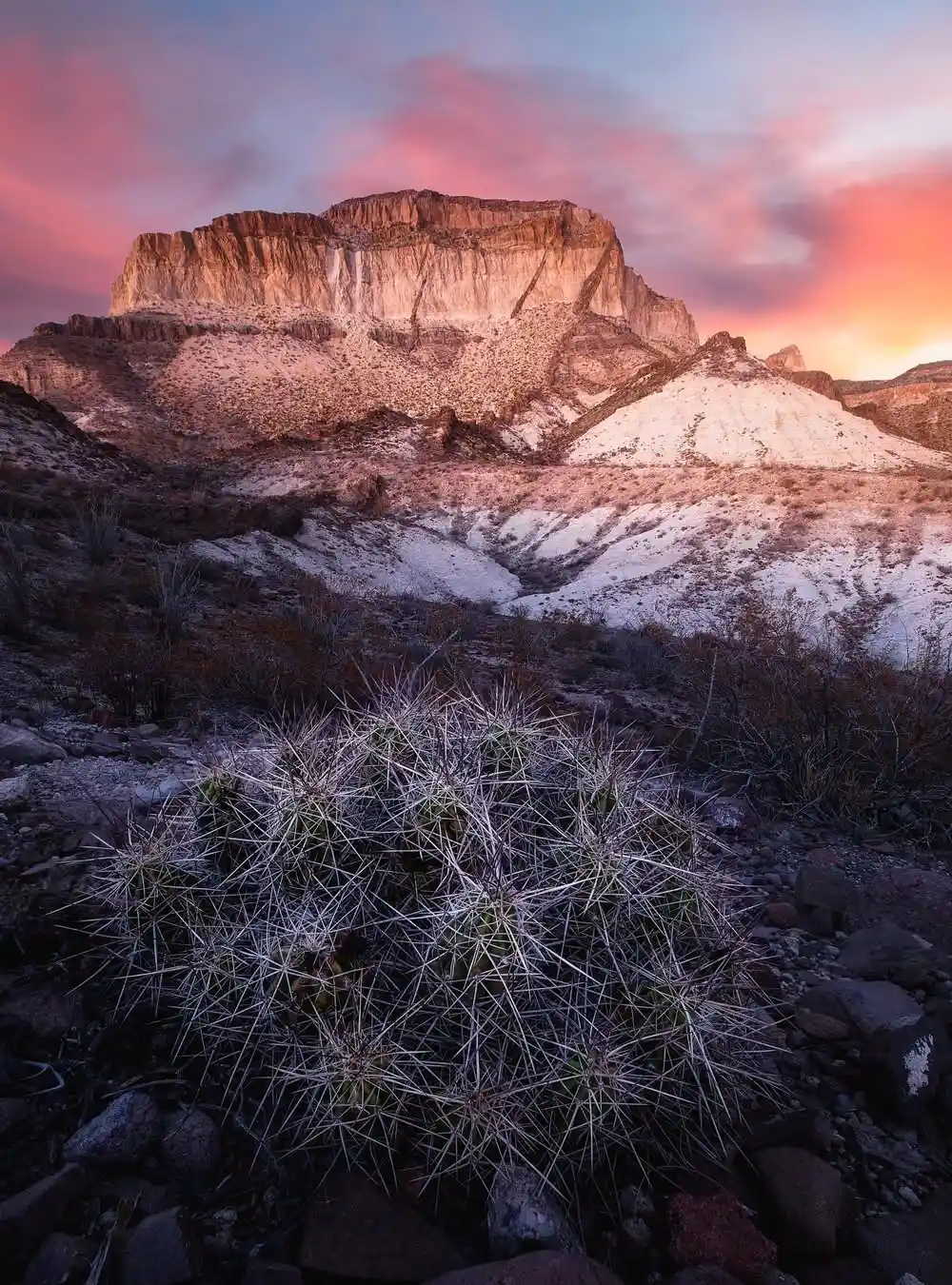
Most people think Texas is all cities and oil fields. The Big Bend region proves them wrong with some of America’s most dramatic desert landscapes and authentic Western culture.
Big Bend Ranch State Park sits next to the famous national park but costs half as much and sees far fewer visitors. The state park offers equally stunning river canyons and mountain vistas. Camping costs $15 per night, and you can often score sites with zero neighbors.
Davis Mountains State Park provides excellent mountain desert camping with cooler temperatures and night skies. The nearby McDonald Observatory offers some of the best stargazing programs in America. Indian Lodge within the park offers affordable cabin rentals if you want a break from van life.
Seminole Canyon State Park exhibits ancient pictographs and limestone canyons along the Rio Grande. The rock art here dates back 4,000 years and rivals anything in more famous archaeological sites. Camping costs $20 per night with excellent hiking and bird watching opportunities.
East Coast & Great Lakes Escapes
Most van lifers think the East Coast means expensive campgrounds and “No Overnight Parking” signs. They’re half right. The famous spots have become overpriced tourist traps. But the East isn’t just a drive-through to Western destinations.
The East Coast and Great Lakes region hide incredible van life opportunities. You just need to know where to look.
1. Maine’s Hidden Coast Beyond Acadia

Acadia National Park costs $35 per night for cramped camping with neighbors 10 feet away. Bar Harbor turns into a tourist zoo every summer. Parking downtown costs more than some Western states charge for camping.
Head to Maine’s Bold Coast. This tough stretch from Machias to Calais offers the same dramatic cliffs and crashing waves without the crowds. Cutler Coast Public Reserved Land provides free camping with ocean views (GPS: 44.6944, -67.2306). The hiking trails here lead to 200-foot cliffs that make Acadia’s views look tame.
Quoddy Head State Park offers excellent van camping for $25 per night. You can watch the sunrise from America’s easternmost point without fighting tour buses.
Timing tip: Visit September through October for peak colors and smaller crowds. Avoid July-August when costs triple and parking becomes impossible.
2. Finger Lakes Solutions for Wine Country Crowds
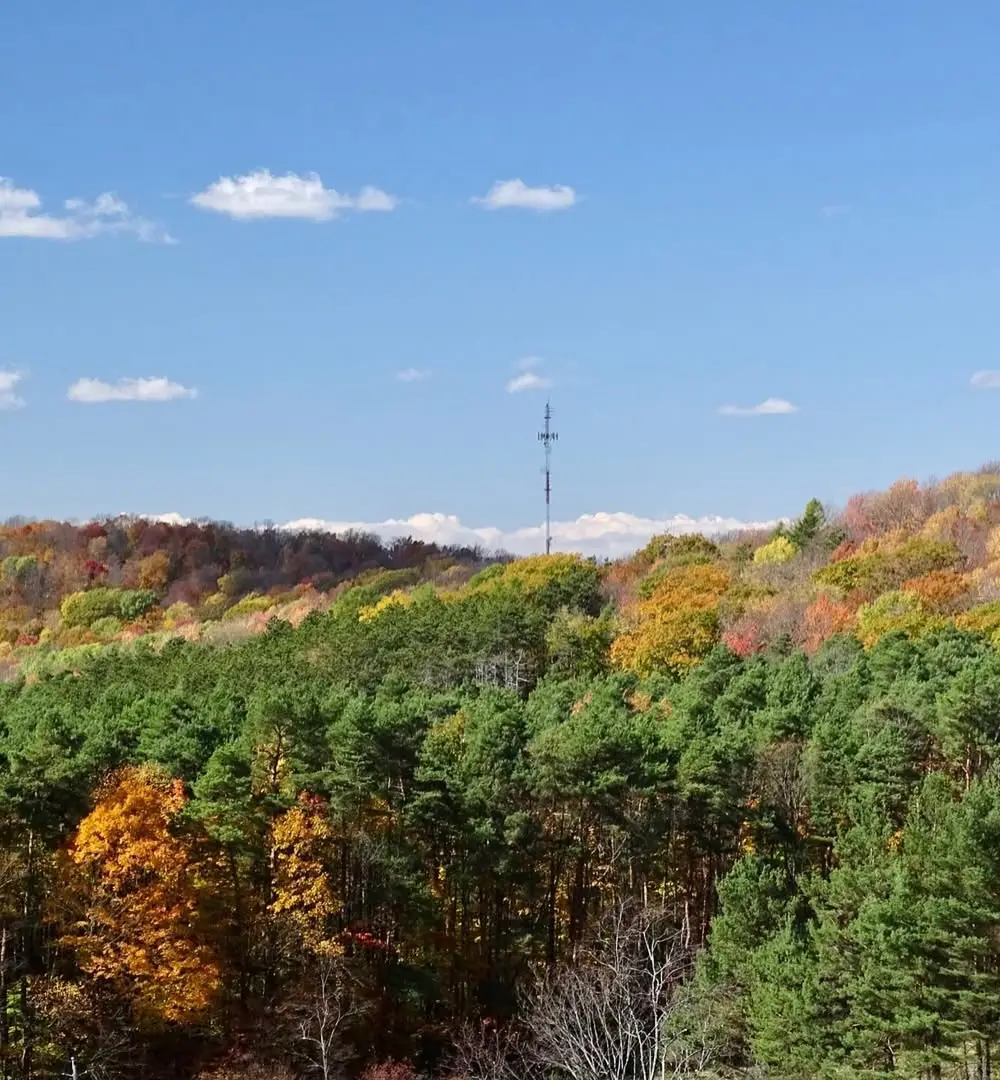
New York’s Finger Lakes have become so popular that wineries charge $10 just to park. Campgrounds around the lakes cost $60+ per night during peak season. The scenic routes turn into traffic jams on summer weekends.
Allegany State Park offers excellent base camping for $30 per night with easy access to multiple Finger Lakes. The park rarely fills up and provides hiking trails, fishing, and cooler temperatures during the hot summer months.
For free options, try the state forests around Prattsburgh (GPS: 42.5167, -77.2833). These areas offer dispersed camping with lake access and connections to the Finger Lakes Trail system. You can visit wineries during off-peak hours and retreat to peaceful forest camping.
Money-saving plan: Visit wineries Monday through Thursday for lower tasting fees and better service. Many offer free tastings during slow weekdays.
3. Blue Ridge Parkway Backup Routes
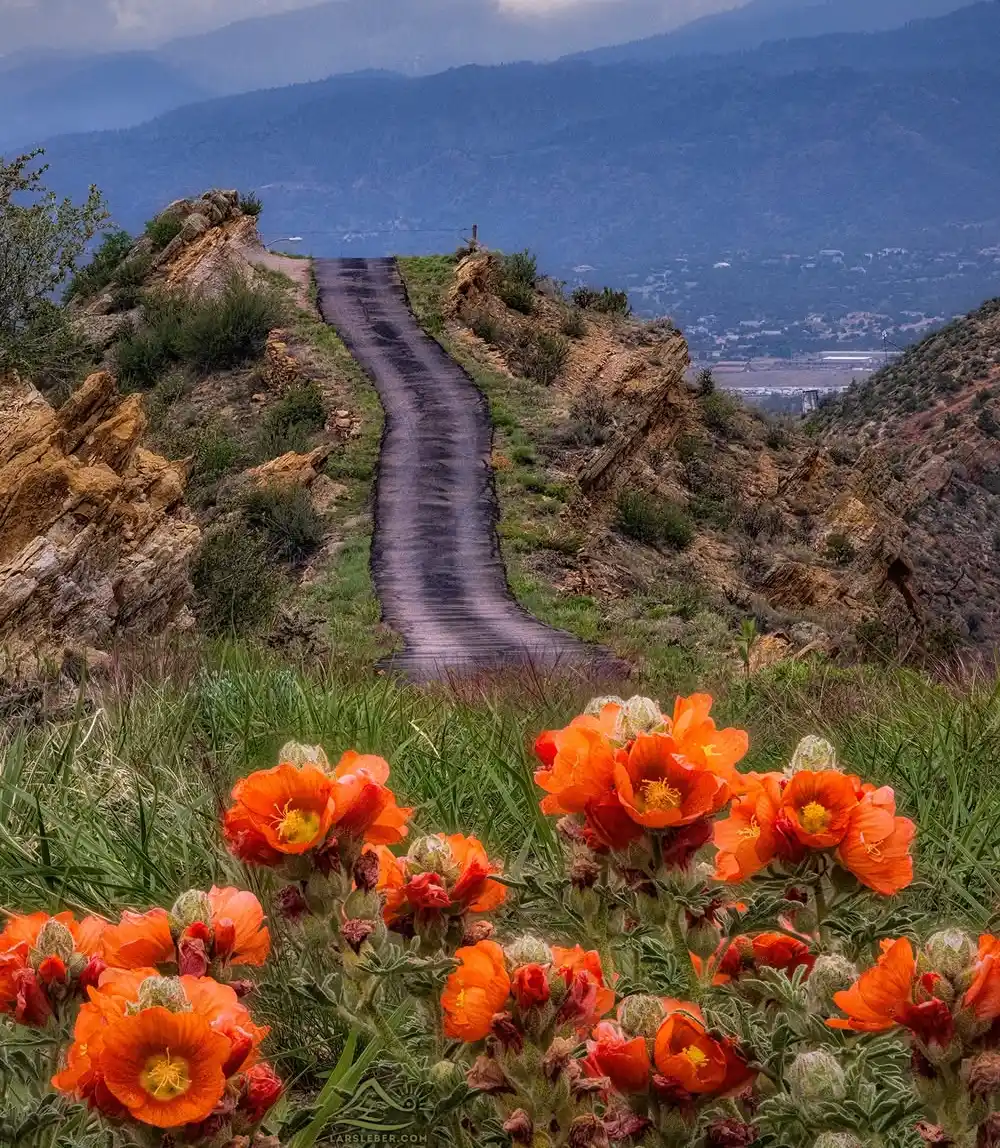
The Blue Ridge Parkway looks beautiful, but it drives like a parking lot during the fall colors season. Campgrounds book out 6 months ahead. The speed limit of 45 mph means you’ll spend entire days covering short distances.
Skyline Drive alternatives in Virginia’s Shenandoah region offer the same mountain views with less traffic. Route 211 through Luray provides access to Shenandoah National Park without the parkway crowds. George Washington National Forest offers free camping throughout the area.
North Carolina’s back roads parallel the parkway with better camping options. The Nantahala National Forest provides hundreds of free camping spots with mountain views (GPS: 35.2833, -83.6167). You can access the same overlooks and hiking trails through less-traveled forest roads.
Smart timing: Visit mid-week in September or late October for colors without crowds. Avoid weekends from late September through mid-October.
4. Great Lakes Hidden Shores
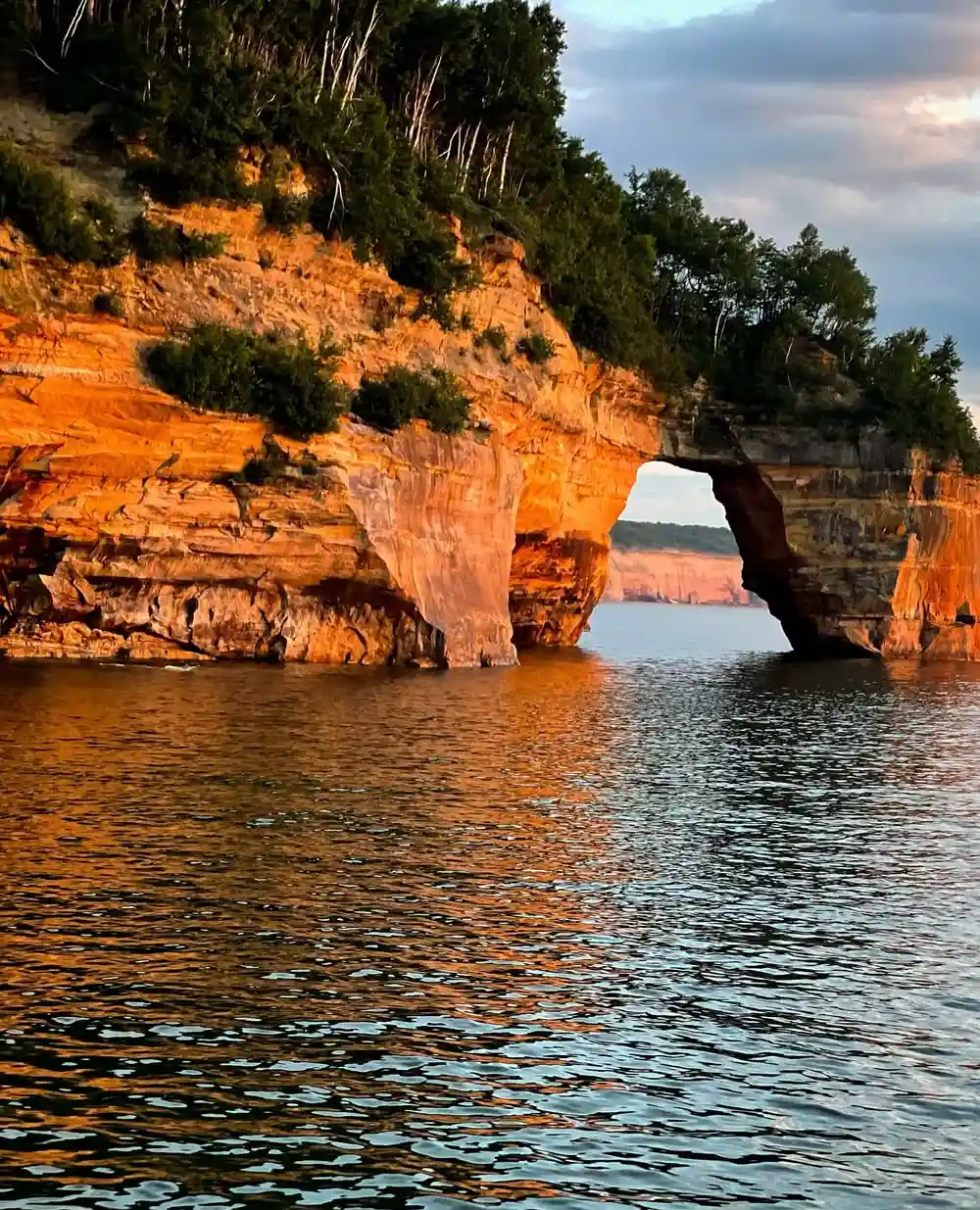
Everyone thinks of Sleeping Bear Dunes and Mackinac Island for Great Lakes camping. Both have become expensive and crowded. The Great Lakes offer 10,000 miles of shoreline. Most of it stays empty.
Lake Superior’s north shore in Minnesota provides surprising free camping along forest roads. The Superior National Forest offers camping with lake access and fewer bugs than popular Lower Peninsula spots (GPS: 47.8333, -91.0833).
Michigan’s Upper Peninsula hides dozens of excellent lakes beyond the famous ones. Porcupine Mountains Wilderness State Park offers affordable camping ($16/night) with old-growth forests and Lake Superior beaches. The area sees a fraction of Sleeping Bear’s crowds.
Wisconsin’s Apostle Islands region provides excellent base camping on the mainland with ferry access to pristine islands. Bayfield County Forest offers free camping with lake views and hiking trails that connect to the Ice Age Trail.
Weather note: Great Lakes camping works best May through September. Winter brings harsh conditions but incredible solitude for hardy van lifers.
How to Research Hidden Gems For a Dreamy Experience
Finding these hidden spots requires method, not just luck. Most van lifers use the same apps and websites, which leads them to the same crowded places. You need a different approach to discover alternative destinations that stay off the mainstream radar.
Here’s how to find the best van life spots that other people miss.
1. Use iOverlander Like a Detective
Most people open iOverlander and search for “camping near me.” That’s exactly what everyone else does. Rather, zoom out on the map and look for gaps between popular spots. These empty areas often hide incredible camping.
Search for specific features instead of general camping. Try “hot springs,” “waterfall,” or “viewpoint” in rural areas. Look for spots with only 1-2 reviews from several years ago. These often indicate great places that haven’t been discovered yet.
Check the photos and dates carefully. Recent photos with 20+ reviews mean the spot has gone viral. Look for older entries with fewer comments. Those usually offer better experiences.
Pro tip: Search during off-season months when fewer people post. Summer searches show crowded spots. Winter searches reveal places that locals use.
2. Local Facebook Groups Beat National Forums
Skip the huge van life Facebook groups. They’re full of the same recycled information about Moab and Joshua Tree. Find local groups instead.
Search for “[State/Region] Camping” or “[Area] Outdoor Recreation” groups. These smaller communities share real insider knowledge. Local hikers and hunters know incredible spots that never make it to van life blogs.
Join groups for specific activities like “Montana Fishing” or “Oregon Hot Springs.” These people spend time in remote areas and often share camping information. They’re less likely to overcrowd spots because they have different goals than van lifers.
Ask specific questions like “quiet camping near Glacier with cell service” instead of “where should I go?” Locals respond better to detailed questions and give better answers.
3. Master Seasonal Timing Strategies
Every destination has peak and off-peak seasons. Research these patterns to find the same places with fewer crowds and lower costs.
Desert areas like Arizona and Utah offer excellent camping during winter months when mountain areas close. Mountain regions shine during summer when deserts become too hot. Coastal areas work best during shoulder seasons (spring and fall).
Check local weather patterns and tourism data. Many incredible spots stay empty during months that most people consider “bad” but offer great conditions for van life.
4. Talk to Locals, Not Just Online Research
Gas station attendants, local coffee shops, and small-town visitor centers hold the best information. These people live in the areas you’re visiting and know spots that never appear online.
Ask specific questions: “Where do locals go camping?” or “What’s your favorite quiet spot for sunset?” Avoid asking about “van life” destinations, which might get you directed to crowded areas.
Hardware stores and outdoor gear shops often have bulletin boards with local information. Check these for camping tips, trail conditions, and local events.
The best alternative destinations reward people who do the research work that most van lifers skip. Stop following the crowd and start discovering places that feel like your own private paradise.
